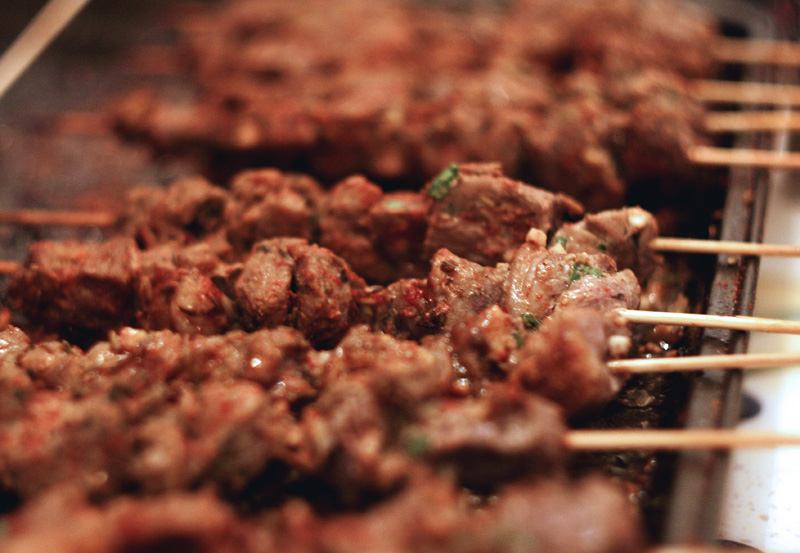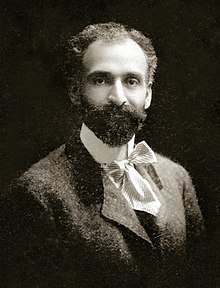Come to the Seroonian Armenian Community center or March 1st, 2019 for Shish Kebab night. Dinner is sponsored by Mr. and Mrs. Hagop and Aida Dakesian. Dinner will be served at 7:30pm.
Come celebrate famous Armenian writer Hovhanness Toumanian’s 150th birthday.


| Tumanian played a role in the history of Armenian literature and spiritual life. He has portrayed the Armenian character, their history, their dreams and their most secret ideals with depth and clarity through his writings. |
| Hovhannes Tumanian was born on February 19, 1869 in the village of Tsegh, Russian Empire (now Lori Province, Armenia). |
| His father, Aslan was the village priest known by the name Ter-Tadevos. Later Tumanian would write “The most precious and the best thing that I had in life was my father. He was honest and the most noble man. Extremely altruistic and generous, witty, cheerful and sociable, at the same time he always maintained an air of deep seriousness”. His father was an offspring of an Armenian princely family of Tumanian, branch of the famous royal house of Mamigonian that settled in Lori in the 10th-11th centuries. His mother Sona was an avid storyteller with a particular interest in fables. Tumanian was the oldest of eight children. |
| He first attended the parochial school in Tsegh then he went to Tiflis to attend the very famous Nersesian School, which he couldn’t finish, because his father passed away 2 years short of graduation. He had to go back to Tsegh to take care of the family. |
| Since 1893 he worked for Aghbyur, Murtch, Hasker and Horizon periodicals and also engaged in public activism. |
| In 1888, at the age of 19, Hovhannes Tumanyan married Olga Machkalian, 17, and they had 10 children. |
| In 1899, Tumanyan came up with an idea of organizing meetings of Armenian intellectuals of the time at his house in Tiflis. Soon it became an influential literary group, which often gathered in the garret of Toumanian’s house. It was called Vernatun, which means garret in Armenian. Prominent members of the collective were Avedik Isahakian, Derenik Demirchian, Levon Shant, Ghazaros Aghayan, Berj Broshian, Nikol Aghbalian, Nar-Dos, ALexander Shirvanzade, Vrtanes Papazian, Vahab Terian, Leo, Mariam Tumanian and others. |
| During the government provoked Armenian Tatar massacres 1905-1907, Tumanian took the role of a peacemaker, for which he was arrested twice. |
| In 1912 Tumanian was elected the president of the association of Caucasus Armenian Writers. |
| In October 1914 Tumanian joined the “Committee for Support of War Victims”, which later helped Armenian Genocide refugees settled in Etchmiadzin. In 1921 in Tiflis he founded the House of Armenian Art and in the fall of the same year, Tumanian went to Constantinople to find support of Armenian refugees. After months spent there, he returned ill. After surgery in 1922, he started to get better. But in September, his disease started to progress again. He was transferred to a hospital in Moscow, where he died on March 23, 1923. |
| Tumanian’s inspiration came from everyday ordinary activities of the people. The heroes of his works are simple villagers. Life was harsh for villagers who endured unwritten patriarchal laws, prejudice and the reigns of unjust oppression. |
| Among the works that portray the times in which Tumanian lived, are his poem, “Anush” and the story “Gikor”. |
| Two national operas have been staged based om Tumanian’s “Anush” and “The Capture of the Fortress of Tmuk”. A. Tigranian’s “Anush” and A. Spendiarian’s “Almast” (drawn from “The Capture of the Fortress of Tmuk) have become all time favorites. |
| He is known as “Amenahayotz Tamadan” (the Master of Ceremonies of the Armenian nation), “The Father of Armenian Orphans” and the most famous one “Poet of All Armenian”. He earned the title when the Catholicos of Armenia had ordered that Armenian refugees from the west not enter certain areas of the Holy See, since he was “The Catholicos of all Armenians”. Tumanian in response decried that decision claiming that the refugees could seek relief in the Catholicos’ quarters under the order of “The Poet of all Armenians”. |
| He created lyrics, fables, epic poems and translations into Armenian of Byron, Goethe and Pushkin. |
| His famous works include: |
| The Dog and the Cat, Maro, Akhtamar, David of Sassoun, The Capture of Fort Tmuk, The Drop of Honey, Anush, Gikor, David of Sassoun, Nazar the Brave, The Kid Goat, The Unlucky Panos. |
| Tumanian wrote “Each poet, first of all, should be the heart of his people”. |
| Compiled by Nayiri & Asbet Balanian |



No comments yet.